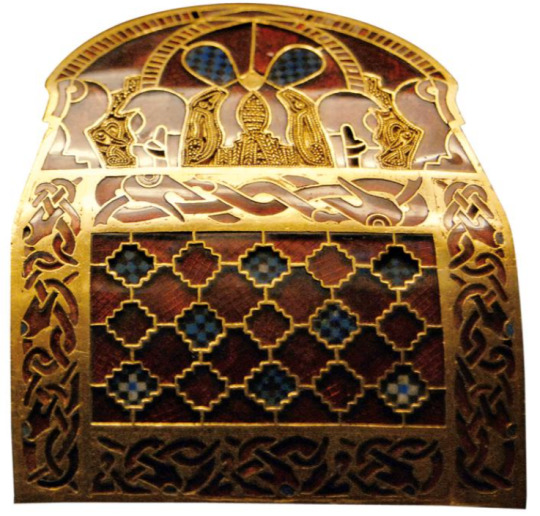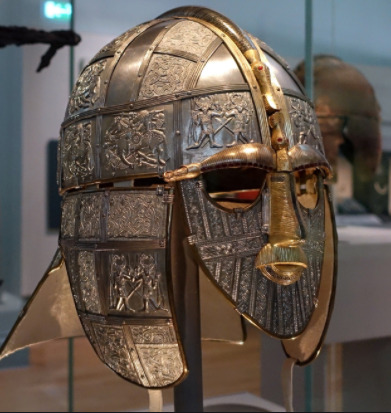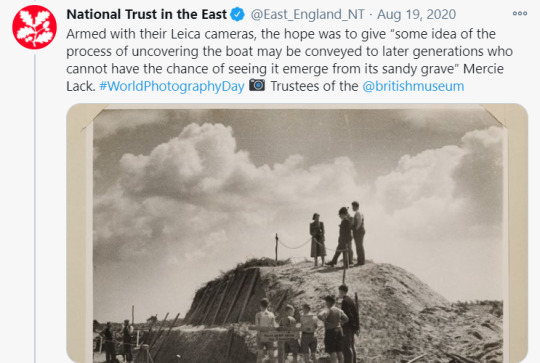#so why do they have the antiquated earth (western european/american which is all of earth for comic book writers)
Explore tagged Tumblr posts
Text
still on episode 1. i have the world's greatest attention span.
anyway i am deeply amused by the idea of kara supergirl danvers zor el hanging up a photo print of her cousin in her apartment. can you imagine a human doing that. yeah that's an 18 x 24 photo print of my cousin clint,

got it in one
#also its kind of weird that women in kryptonian society take their husband/father's whole name#i suppose it's a remnant of early writing in superman?#like krypton's supposed to be the perfect society#so why do they have the antiquated earth (western european/american which is all of earth for comic book writers)#custom of women not having their own names#you'd think she'd be named kara el#or have a one syllable first name like all the male kryptonian characters#like “dru zod” (or was it “in zod”) or “jor el” or “zor el” as opposed to “kara zor el” or- shit what was her mom's name again?#i want to dissect kryptonian naming schemes for 45 minutes now#there was this one fanfiction that had her be named kara el and it was actually surprisingly good though it hasn't been updated since may 2#an actually alright isekai fanfiction; a curious rarity#it wasn't like incredible but it certainly had a lot of promise#i was really looking forward to the rest of it#anyway i wonder if somebody's already done a deep dive into a more coherent system for naming people on krypton.#or found a way to make the current one work#not worm#dw supergirl cw show
4 notes
·
View notes
Text
New Post has been published on Vivan Life Sciences
New Post has been published on https://www.blog.vivanls.com/its-about-vedic-depictions-simply-astonishing-fascinating-have-a-look/
It’s about Vedic depictions, simply astonishing & Fascinating !!! Have a look..

Fascinating information for those of you who may be interested: and for those of you who are not attracted by Indian lore, do read the first three paras, at least! ~~~~~~~~~~~~~~~~~~~~~~~~~~~ It is amazing how much Western science has taught us. Today, for example, kids in grammar school learn that the sun is 93 million miles from the earth and that the speed of light is 186,000 miles per second. Yoga may teach us about our Higher Self, but it can’t supply this kind of information about physics or astronomy. Or can it? Professor Subhash Kak of Louisiana State University recently called my attention to a remarkable statement by Sayana, a fourteenth century Indian scholar. In his commentary on a hymn in the Rig Veda, the oldest and perhaps most mystical text ever composed in India, Sayana has this to say: “With deep respect, I bow to the sun, who travels 2,202 yojanas in half a nimesha.” A yojana is about nine American miles; a nimesha is 16/75 of a second. get out your calculators! 2,202 yojanas x 9 miles x 75/8 nimeshas = 185,794 m. p. s. Basically, Sayana is saying that sunlight travels at 186,000 miles per second! How could a Vedic scholar who died in 1387 A. D. have known the correct figure for the speed of light? If this was just a wild guess it’s the most amazing coincidence in the history of science! And Sayana was merely commenting on Rig Veda which was supposedly composed 9000 years ago !! The yoga tradition is full of such coincidences. Take for instance the mala many yoga students wear around their neck. Since these rosaries are used to keep track of the number of mantras a person is repeating, students often ask why they have 108 beads instead of 100. Part of the reason is that the mala represent the ecliptic, the path of the sun and moon across the sky. Yogis divide the ecliptic into 27 equal sections called nakshatras, and each of these into four equal sectors called paadas, or “steps,” marking the 108 steps that the sun and moon take through heaven. Each is associated with a particular blessing force, with which you align yourself as you turn the beads. Traditionally, yoga students stop at the 109th “guru bead,” also called MERU, flip the mala around in their hand, and continue reciting their mantra as they move backward through the beads. The guru bead represents the summer and winter solstices, when the sun appears to stop in its course and reverse directions. In the yoga tradition we learn that we’re deeply interconnected with all of nature. Using a mala is a symbolic way of connecting ourselves with the cosmic cycles governing our universe. But Professor Kak points out yet another coincidence: The distance between the earth and the sun is approximately 108 times the sun’s diameter. The diameter of the sun is about 108 times the earth’s diameter. And the distance between the earth and the moon is 108 times the moon’s diameter. Could this be the reason the ancient sages considered 108 such a sacred number? If the microcosm (us) mirrors the macrocosm (the solar system), then maybe you could say there are 108 steps between our ordinary human awareness and the divine light at the center of our being. Each time we chant another mantra as our mala beads slip through our fingers, we are taking another step toward our own inner sun. As we read through ancient Indian texts, we find so much the sages of antiquity could not possibly have known-but did. While our European and Middle Eastern ancestors claimed that the universe was created about 6,000 years ago, the yogis have always maintained that our present cosmos is billions of years old, and that it’s just one of many such universes which have arisen and dissolved in the vastness of eternity. In fact the Puranas, encyclopedias of yogic lore thousands of years old, describe the birth of our solar system out of a “milk ocean,” the Milky Way. Through the will of the Creator, they tell us, a vortex shaped like a lotus arose from the navel of eternity. It was called Hiranya Garbha, the shining womb [womb here means the source, point of origin and not an anatomical reference ] and it gradually coalesced into our world, but will perish some day billions of years hence when the sun expands to many times it present size, swallowing all life on earth. In the end, the Puranas say, the ashes of the earth will be blown into space by the cosmic wind. Today we known this is a scientifically accurate, if poetic, description of the fate of our planet. The Surya Siddhanta is the oldest surviving astronomical text in the Indian tradition. Some Western scholars date it to perhaps the fifth or sixth centuries A. D., though the text itself claims to represent a tradition much, much older. It explains that the earth is shaped like a ball, and states that at the very opposite side of the planet from India is a great city where the sun is rising at the same time it sets in India. In this city, the Surya Siddhanta claims, lives a race of siddhas, or advanced spiritual adepts. If you trace the globe of the earth around to the exact opposite side of India, you’ll find Mexico. Is it possible that the ancient Indians were well aware of the great sages/astronomers of Central America many centuries before Columbus discovered America?- the Mayans or Incas!!! Knowing the unknowable: To us today it seems impossible that the speed of light or the fate of our solar system could be determined without advanced astronomical instruments. How could the writers of ancient Sanskrit texts have known the unknowable? In searching for an explanation we first need to understand that these ancient scientists were not just intellectuals, they were practicing yogis. The very first lines of the Surya Siddhanta, informs about the Golden Age when a great astronomer named Maya desired to learn the secrets of the heavens, so he first performed rigorous yogic practices. Then the answers to his questions appeared in his mind in an intuitive flash. Does this sound unlikely? Yoga Sutra 3:26-28 states that through, samyama (concentration, meditation, and unbroken mental absorption) on the sun, moon, and pole star, we can gain knowledge of the planets and stars. Sutra 3:33 clarifies, saying: “Through keenly developed intuition, everything can be known.” Highly developed intuition is called pratibha in yoga. It is accessible only to those who have completely stilled their mind, focusing their attention on one object with laser-like intensity. Those who have limited their mind are no longer limited to the fragments of knowledge supplied by the five senses. All knowledge becomes accessible to them. “There are those who would say that consciousness, acting on itself, can find universal knowledge, Professor Kak admits. “In fact this is the traditional Indian view.” Perhaps the ancient sages didn’t need advanced astronomical instruments. After all, they had yoga! Reference: VIVAN’s Corporate Communication
0 notes
Text
Wednesday 20th January 2021
History from Long Ago and a Bit of Nature Thrown In
See Update edit at the end of this blog*
Another dark day here, absolutely bogging as we might say. Wet and uninviting. There’s no way I want to venture into the great outdoors despite the younger Nature Watch flagging up this helpful article.
So instead, I’ve stayed snug indoors and embarked upon a history lesson. Settle down as you could lose an afternoon on this one. I do apologise for rambling on so much, but it was one of those that once you started, you I just couldn’t stop.

For obvious reasons photos today are not my own but are credited to the sites linked
On an historic day in American history, when a woman takes a presidential role for the first time, I’ve been focusing on women.
The question is do you know anything about Edith Pretty?

Edith Pretty (1883-1942) photo credit: National Trust
This is she.
Now I very much doubt that Edith Pretty is a name that springs to many people’s mind? but if it wasn’t for her, it seems Britain would have been denied one of its greatest national treasure collections.
I started off looking at Edith and her story at Sutton Hoo because I was looking into another little known but hugely influential woman who made an impact on natural history, with barely any recognition at the time and then I got side-tracked by news of The Dig, a new Netflix film, out at the end of this month - the 29th to be precise. Now I’m not a big film fan, but this tells the intriguing true story of how a wealthy and idiosyncratic widow with a ferocious sense of civic duty, lead an archaeological excavation just before the outbreak of World War II (1939-1945)
Just what I want on these horrid Winter evenings, history and mystery.
Edith had a very privileged background and travelled extensively with family in her youth, not just pleasure trips but educational journeys far and wide. The family were interested in ancient sites and antiquities and this stayed with Edith.
When she married at the age of 42 she purchased a marital home and estate named Sutton Hoo*in South East Suffolk. Frank and Edith went on to have a son born when Edith was 47, but sadly Frank only lived until the boy was four years old, after which it’s possible that Edith became more and more interested in spirituality and lives that had gone before.
Sutton Hoo derives its name from Old English. Sut combined with tun means the southern "farmstead" or "settlement" and Hoh refers to a hill "shaped like a heel spur" Wikipedia
* when the Tranmer family Trustees later donated the house to the National Trust, it was renamed Tranmer House
There’s a far longer and more involved tale than I can unravel here. It started with curiosity, hunches and investigations into some strange mounds of earth in the grounds, with the help of Basil Brown. Brown, who Edith was introduced to via acquaintances, was a self-taught archaeologist with an interest in astronomy.
The mounds of earth had undoubtedly been the subject of investigation by grave robbers centuries before, but fortuitously, they’d not gone far enough to make any significant finds and the land continued to lay undisturbed. It’s incredible to think that before the qualified experts became involved, the first excavations took place using household items such as penknives, pastry brushes and bellows. The whole wonderful significance of such an impressive discovery and the way it came about, is fairly earth shattering.
Basil and Edith’s project uncovered the shape and remains of a ship which was at first thought to be Viking, but later determined to almost certainly be a burial chamber marking the death of an Anglo-Saxon king. Interred with it were many priceless, perfectly preserved gold and silver jewelled and highly decorated artefacts from the early 7th century and before. These treasures had been gathered from far and wide; the products of breathtakingly deft workmanship, which, even today, with precision tools and artificial lighting, cannot be matched easily. Some of the items seem, to me, reminiscent of Fabergé’s finest.

A gold shoulder clasp decorated with garnet and glass cloissoné
Image credit National Geographic
Cloisonné is the technique of creating designs on metal vessels with coloured glass paste. This is placed within enclosures made of copper or bronze wires, bent or hammered into the desired pattern. Known as cloisons (French for “partitions”), the enclosures generally are either pasted or soldered onto the metal body. The glass paste, or enamel, is coloured with metallic oxide and painted into the contained areas of the design. The vessel is usually fired at a relatively low temperature, about 800°C. Enamels commonly shrink after firing, and the process is repeated several times to fill in the designs. Once this process is complete, the surface of the vessel is rubbed until the edges of the cloisons are visible. They are then gilded, often on the edges, in the interior, and on the base
The collection of 263 objects included weapons, silver cutlery, gold buckles, coins, and a distinctive full-face helmet, of a kind never before recovered in Britain.

The purse lid on this Link is photographed from various angles and the standard of the materials, design and workmanship is just mind boggling, as is the condition of something which was crafted in the 7th Century.

Bronze Washing Pot decorated with glass and enamel. The hooks are to hang it up. Image credits National Geographic
Two other women who played a key role in documenting the investigation were Mercie Lack and Barbara Wagstaff. People I hadn’t heard of either. They were both schoolteachers who had a passion for photography and for Anglo-Saxon archaeology. As friends they had previously spent school holidays photographing carved stone for the British Museum and they brought their skills to bear on recording the early days of the Sutton Hoo excavation. They likely responded to a public appeal for photographers to help out and turned the Summer break into a holiday stay as well. Their images, many of them neatly annotated, provide a fascinating insight into the project, and include some of the earliest colour photographs from an archaeological investigation in this country. Of all the volunteers their work was the most professional.

Image credit: National Trust, Twitter
The National Trust has undertaken a project to digitalise this collection and preserve it for posterity.
Unfortunately, as is often the way, in the dramatisation the film follows the book upon which it is based, where the author chose to replace them with a fictional (male) character. Like Edith, Mercie also bequeathed her artefacts from the dig to the British Museum. You’d really liked to have thought that the women’s contributions were recognised and noted and not airbrushed out of the story.
Incredibly, after a treasure trove inquest (August 1939 at Sutton Parish Hall) it was determined that the astounding find - which would entirely revolutionise historians’ understanding of the Anglo-Saxons - belonged not to the Crown but to the landowner and extraordinarily Edith donated the entire haul to the nation.
In 1951, having been stored in Aldwych Tube station during the war, it went on display in the British Museum - albeit with no credit, not a single namecheck, for Basil Brown. Sadly, Edith was no longer around to object. Basil was almost 90 when he died in 1977, but after suffering a blood clot on the brain, she had died in 1942, aged just 59.
Winston Churchill had offered Edith a CBE in recognition of her extraordinary generosity, but she declined the honour, almost certainly on the basis, according to Laura Howarth, archaeology manager for the National Trust, that she had ‘merely been doing her duty’
Laura Howarth says ‘There have been notable Anglo-Saxon finds since, but nothing like this, a fully furnished, undisturbed ship burial. We know of only three Anglo-Saxon ship burials, two at Sutton Hoo and one near by at Snape. So it was a very localised practice’

Wikipedia Link Sutton Hoo
TIMELINE:
1926 Edith Pretty buys the site of Sutton Hoo, and becomes fascinated by the strange mounds of earth on her land.
1939 Basil Brown discovers a funerary cache of 263 objects in tumulus 1. World War II breaks out in September.
1946 After being kept safe underground during the war, the treasure—owned by the British Museum—is put on public display.
1990s Further excavations uncover another intact burial site in tumulus 17 containing a young man, a horse, and weapons.
The British Museum link to Edith and to the treasures

Photo: Harold John Phillips in the public domain. The ‘skeleton’ of the almost 90′ Ghost Ship imprint in the soil. This size ship would have accommodated 40 oarsmen
There’s also a piece about recreating the ‘Ghost Ship’ on this Daily Mail link and it has a good piece of National Trust video showing the site.
Rebuilding the Ship and why use Green Oak?
The Ship’s Company Team is a group of people with the collective desire to resurrect King Raedwald’s burial ship and turn the famous ghost imprint into a living reality.
Although there is no evidence left to examine the identity of the illustrious occupant of the burial ship, a strong guess is that it was possibly King Raedwald? It certainly must’ve been someone fabulously wealthy and highly regarded. The Sutton Hoo sword video from the British Museum at the end of this blog is very well worth a watch, exploring more about the man.
Within the ship, archaeologists found various treasures from across both the British Isles as well as the Byzantine (eastern Roman) and Frankish (western European) empires — including the famed Sutton Hoo helmet.
The grave itself is thought to belong to King Rædwald of East Anglia, a member of the Wuffingas dynasty which has been associated with the Wulfing clan of Sweden, who appeared in the Old English epic poem Beowulf.
If you’d like to read more and see some absolutely fabulous original photographs do go over to this Anonymous Blog. Edith was the cousin of the author’s Great Grandmother and it is a really personal and detailed account of what the family know of this incredible lady. I highly recommend it.
So there we are, you can see how I became utterly absorbed and went from internet site to site following all the history. I’m really interested in catching the film and seeing how the whole story of the people and the discovery is portrayed. Remember the date 29th January, if you have access to Netflix.
*UPDATE:
Please do read this blog about Basil Brown, written by John Cooper
youtube
WHAT ELSE DID I LEARN TODAY:
The Seventh Century covers the years 601-700 and I picked out this fact
Only one woman has ever sat on China's throne as Emperor in her own right. That woman was Wu Zetian (624-705) of the Tang dynasty
0 notes